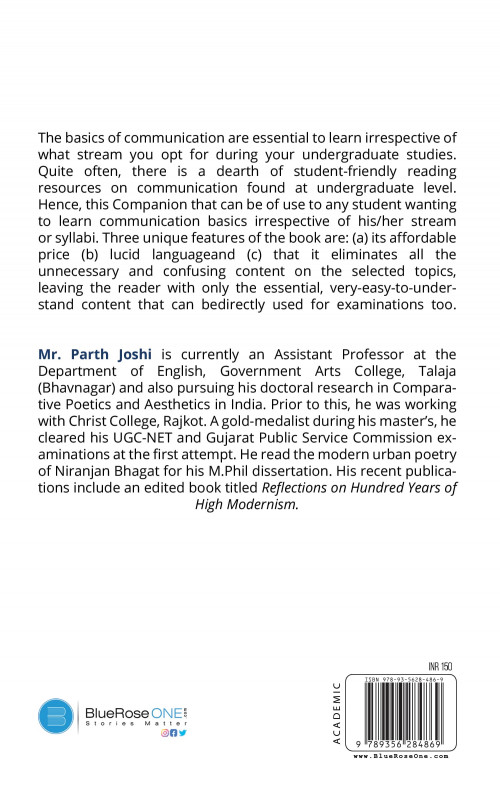Communication Skills: A Students' Companion
by Parth Joshi | 22-Jun-2022
(0)
The practical dimension of communication is often quickly grasped by students but theory is found tricky in various ways. This book, therefore, focuses purely on the theoretical dimensions of communication. It is very difficult to claim pure origi...
Original
Books
Fastest
Delivery
7-day
Replacement
Book Details
- Language : English
- Pages : 104
- ISBN : 9789356284869
- Genre: ACADEMIC
- Size : 5 x 8
- Binding Type : PAPERBACK
- Age Group: + Years
- Paper Type : WHITE PAPER
- Interior : BLACK & WHITE
- Cover : MATTE FINISH
- Book Type : PAPERBACK
- Tags : Communication Skills,A Students' Companion,Academic
-
Best Sellers Rank :
#44 in Academics
#242 in Global
Reviews
There are no reviews for this product yet.

 USD
($)
USD
($) AUD
($)
AUD
($) CAD
($)
CAD
($) EUR
(€)
EUR
(€) HKD
($)
HKD
($) MYR
(RM)
MYR
(RM) GBP
(£)
GBP
(£) SGD
($)
SGD
($)








